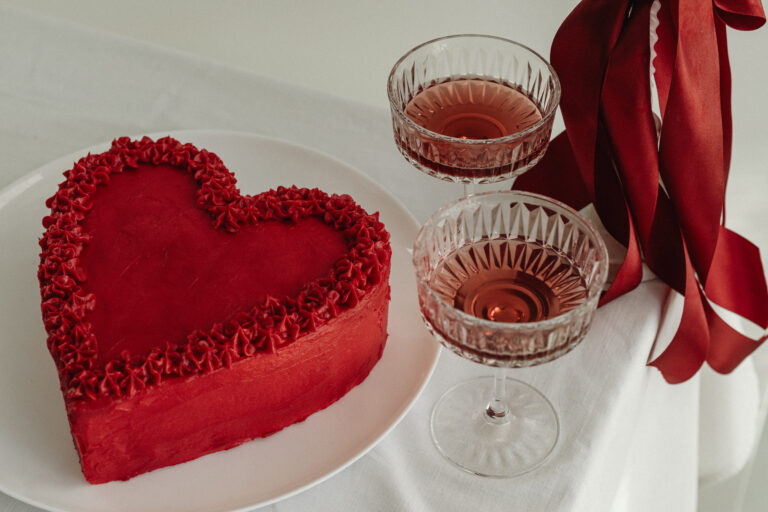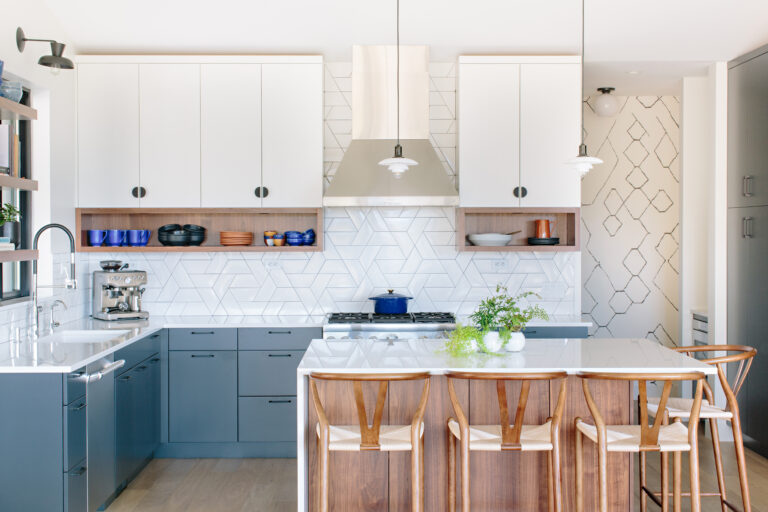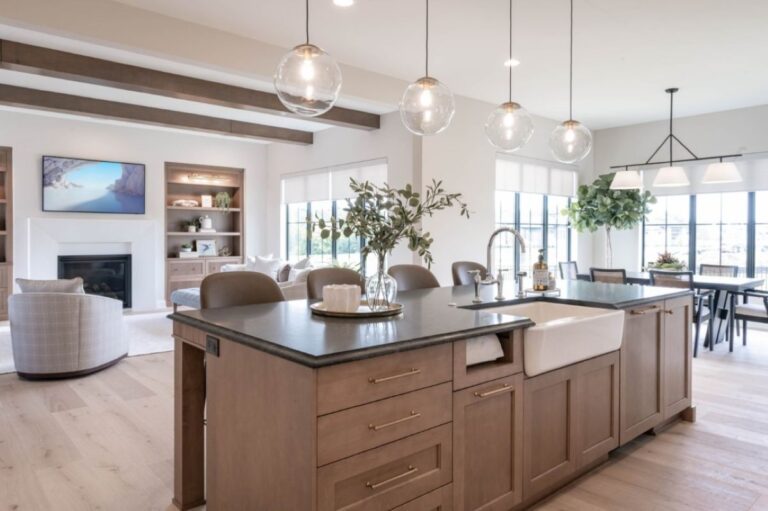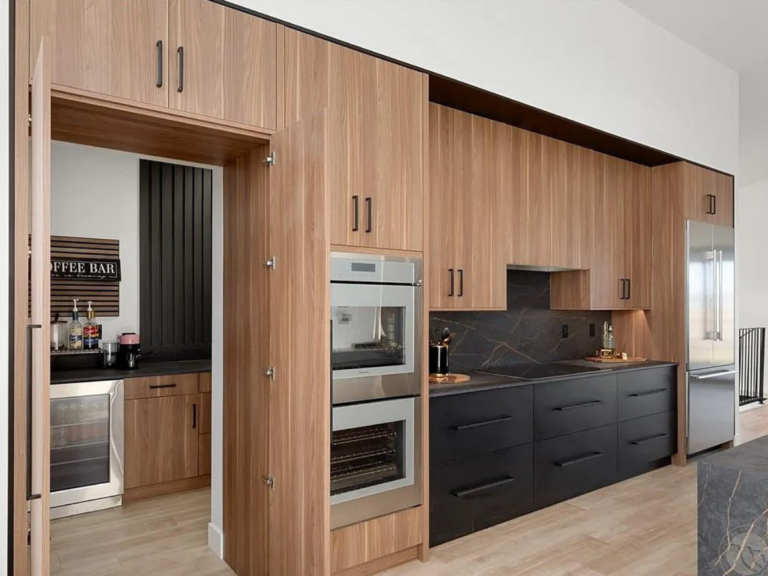Choosing Cabinet Hardware Styles
Choosing cabinet hardware can seem daunting. There are many styles and finishes to decide between. We’ll make the choice a little easier with these kitchen designer approved tips.
Match Cabinet Hardware Style to Kitchen Style
While there are seemingly endless options for cabinet hardware, most styles can be categorized into style groups: modern/contemporary, traditional, and transitional. This range encompasses most kitchen styles and makes it easier to narrow down hardware.

Traditional Hardware: Dainty, ornamented, or historical-style hardware in old-world materials.
Contemporary Hardware: Sleek, clean-lined hardware in a minimalist style. “Less is more” really shines in contemporary style.
Transitional Hardware: Combining elements of tradition with modern shapes or using a tasteful combination of hardware styles in a space.
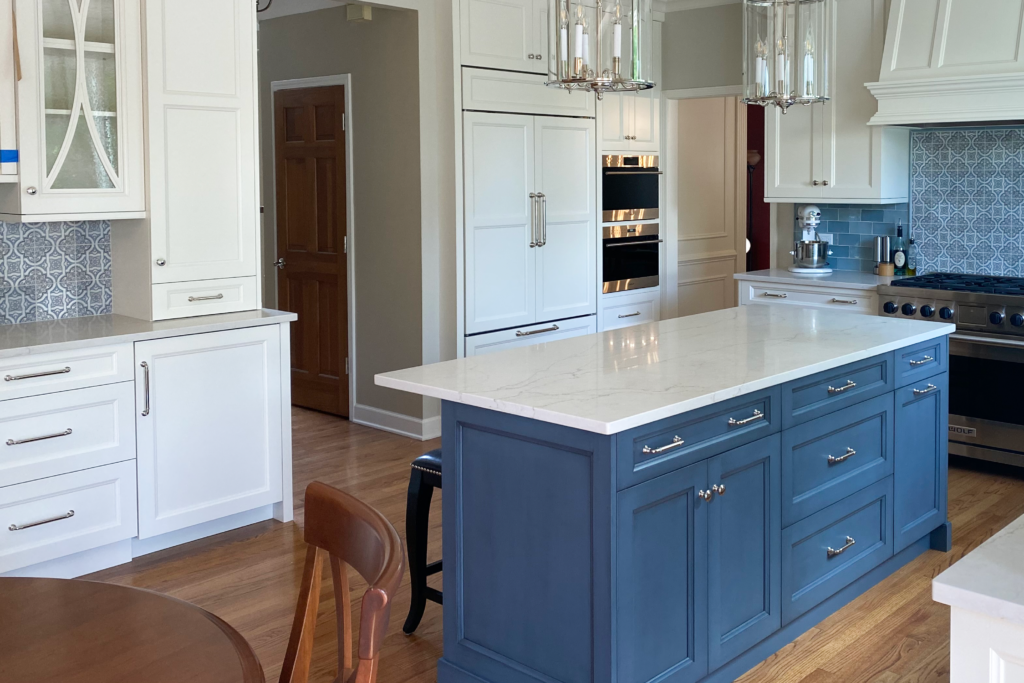
Choosing cabinet and drawer hardware that matches the kitchen’s overall style helps create a cohesive space. Adding modern hardware to an otherwise traditional space will feel disjointed. Transitional or traditional hardware will feel cohesive and professional when added.
How to Choose Pulls Vs Knobs
Cabinet pulls are commonly called handles. Think of longer rectangles or D shapes.
Knobs are smaller in size and are usually spherical but sometimes square in shape. How you choose each depends on the function and level of force needed to open the cabinet.
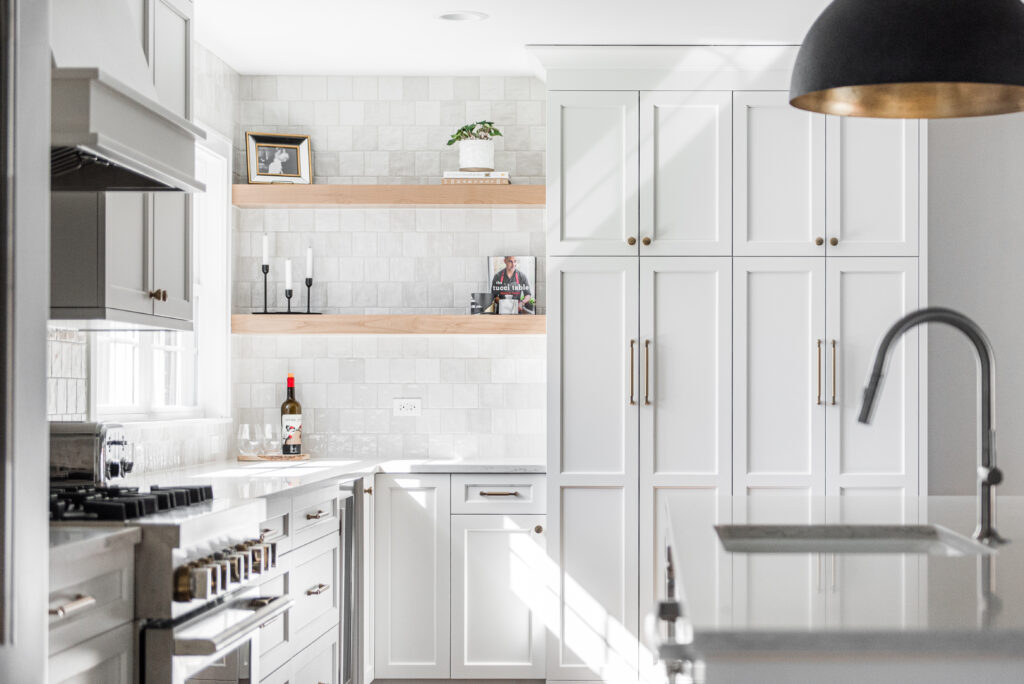
For example, lesser-used cabinets above the fridge are perfect doors for knobs. Handles are better suited for large pantry doors.
Style is also a factor in this choice. Handles have more visual weight, while knobs are daintier.
Which Hardware Finish Is Best?
Most people are familiar with three standard kitchen cabinet hardware colors: black, gold, and silver. However, there are more variants of finishes and industry terms to describe the various hardware finishes, such as:
- Matte Black
- Antique Brushed Brass
- Polished Brass
- Pewter or Copper
- Chrome
- Brushed Nickel
- Oil Rubbed Bronze
- Satin Nickel
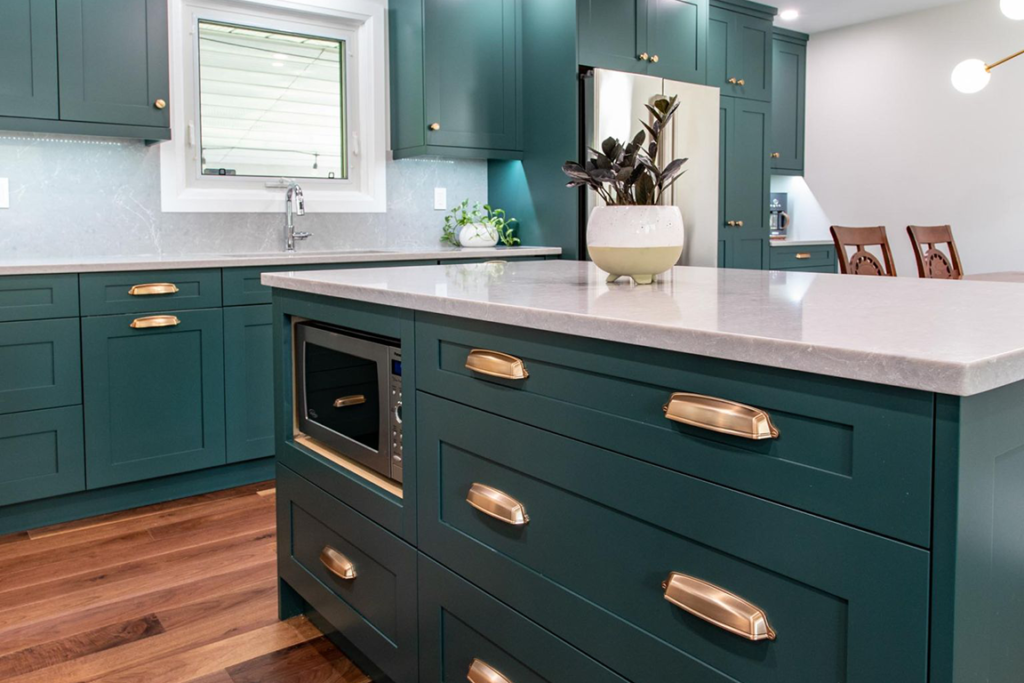
Deciphering Cabinet Hardware Finish Terms
If you are not familiar with these terms, we understand. Homeowners outside the kitchen design industry may not recognize what these terms mean.
To simplify the colour of the hardware:
- Brass is gold
- Copper is orange toned metal
- Rose gold is pink toned metal
- Nickel is silver
- Oil-rubbed is shades of brown
- Black is black
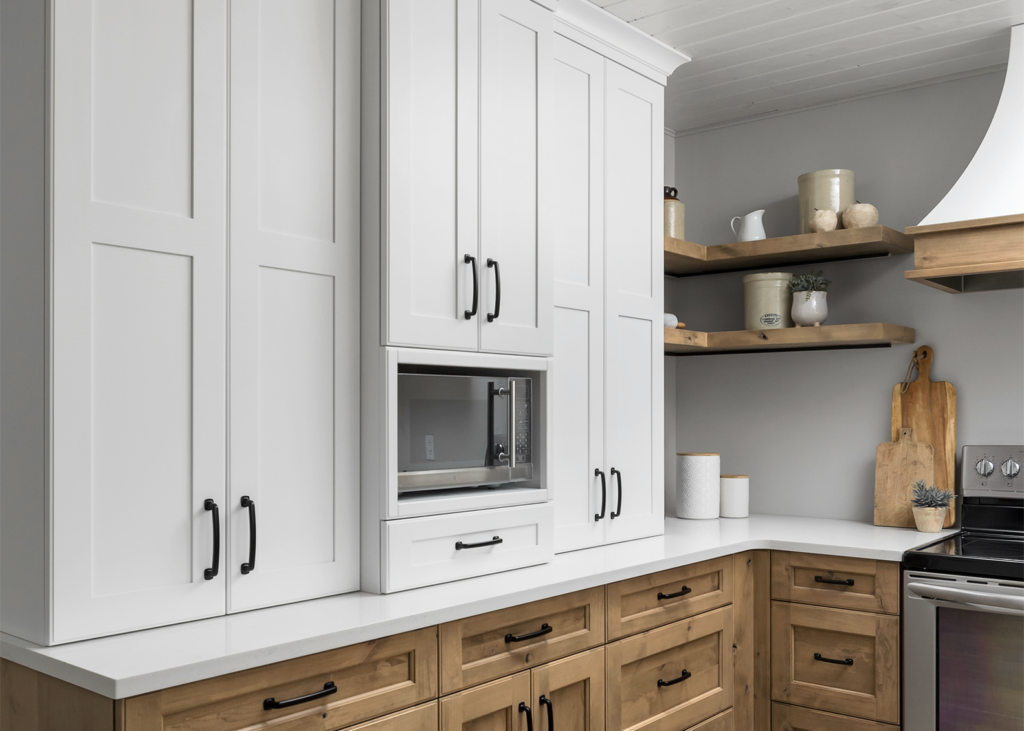
To simplify the type of finish:
- Polished finishes are shiny and reflective.
- Brushed finishes have some shine but are textured.
- Antiqued finishes are purposely made to look older than they are.
- Oil-rubbed finishes are darkened but keep the undertone of the metal.
- Matte finishes have no shine.

Matching Hardware Finishes to Your Cabinets
When matching hardware to the cabinetry finish, color theory and kitchen style are the two biggest factors.
Warm-toned hardware finishes like bronze pair well with warm neutrals. Cool finishes like nickel pair well with cool-tone colors and grey shades. Black and white are often paired together for a monochromatic look. Or spice things up with contrasting shades like green cabinetry and copper hardware.
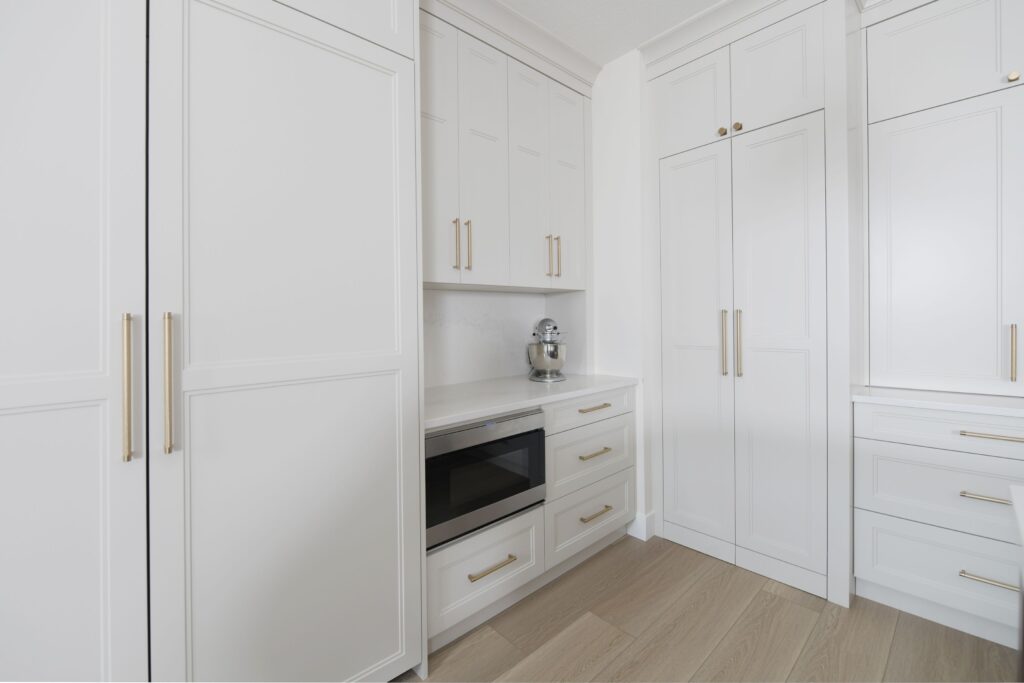
Kitchen style is another factor to keep in mind. Traditional kitchens would look lovely with antique or bronze hardware. Modern kitchens often boast polished nickel. Contemporary trends lean towards black hardware.
The goal is to create a space that feels connected. Keep in mind the other finishes in the room and make sure to repeat your hardware finish in at least one other place. For example, in decorations, lighting fixtures, or window moldings.
More Kitchen Cabinet Hardware Design Tips
Now that we have the basics covered, here are a few more tips that will help you pick the perfect cabinet hardware for your kitchen.
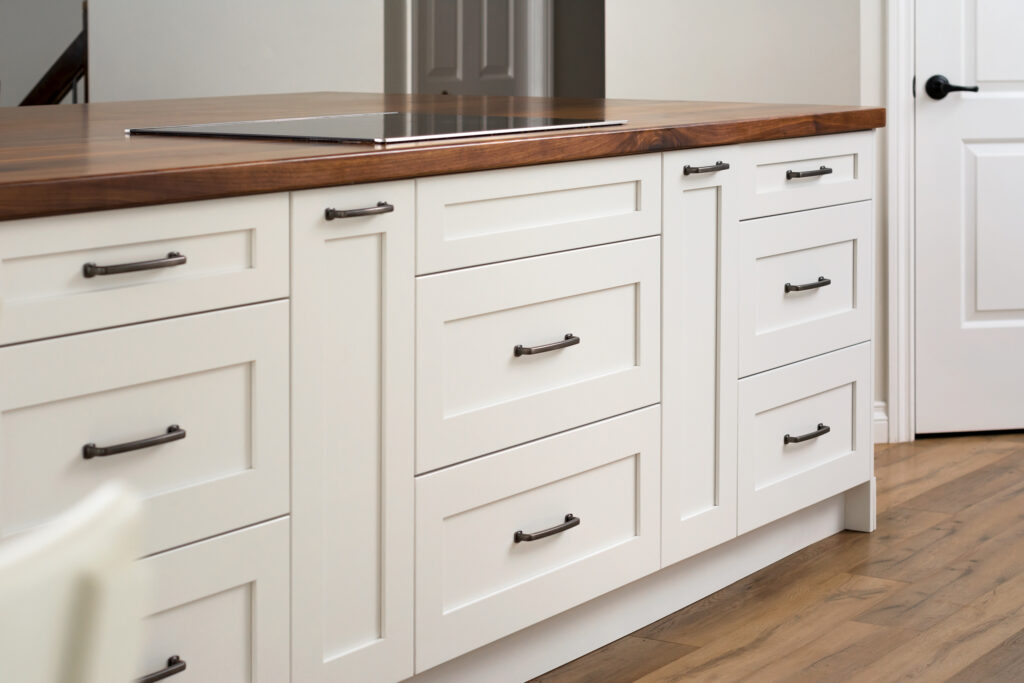
Match Handle Lengths to Cabinetry
For a balanced design, match the lengths of your handles to the size of your drawers/door fronts. Having longer handles on longer drawers, and shorter handles on shorter drawers helps with the balance of the design.
A general rule is that the handle should visually be 1/3 of the length of the drawer or door.
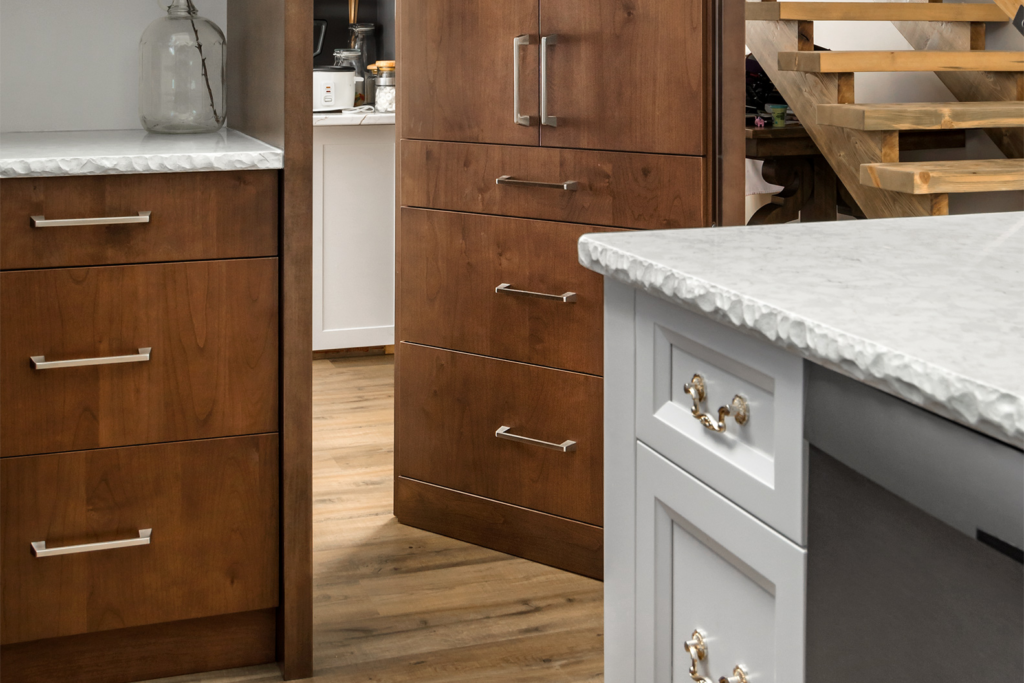
Add a Mixture of Hardware Styles
Mix and match handles, pulls, and knobs to create a visually exciting space. Doors that are not used as often can have a more intricate knob or even a latch!
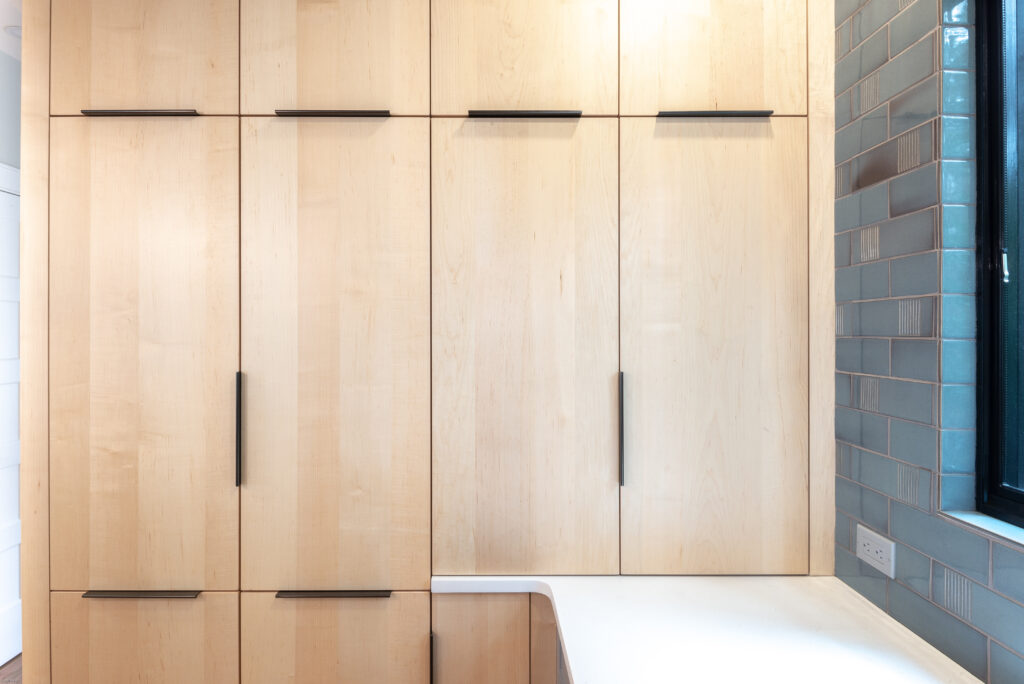
Note Hardware Placement
The installation of hardware can change the cabinet’s vibe. Installing handles vertically or horizontally can add emphasis to visual lines. Another example is placing knobs in the middle of door fronts vs in the corner.
The video below from Hardware Resources provides excellent visuals for this concept.
Design Ideas we Love
Here are some design ideas from Decor Cabinets featuring stunning cabinet and drawer hardware.

Cute knobs are paired with nickel cup pulls in this classic kitchen.
Dainty brass hardware adds a feminine touch to this walnut and white built in unit.
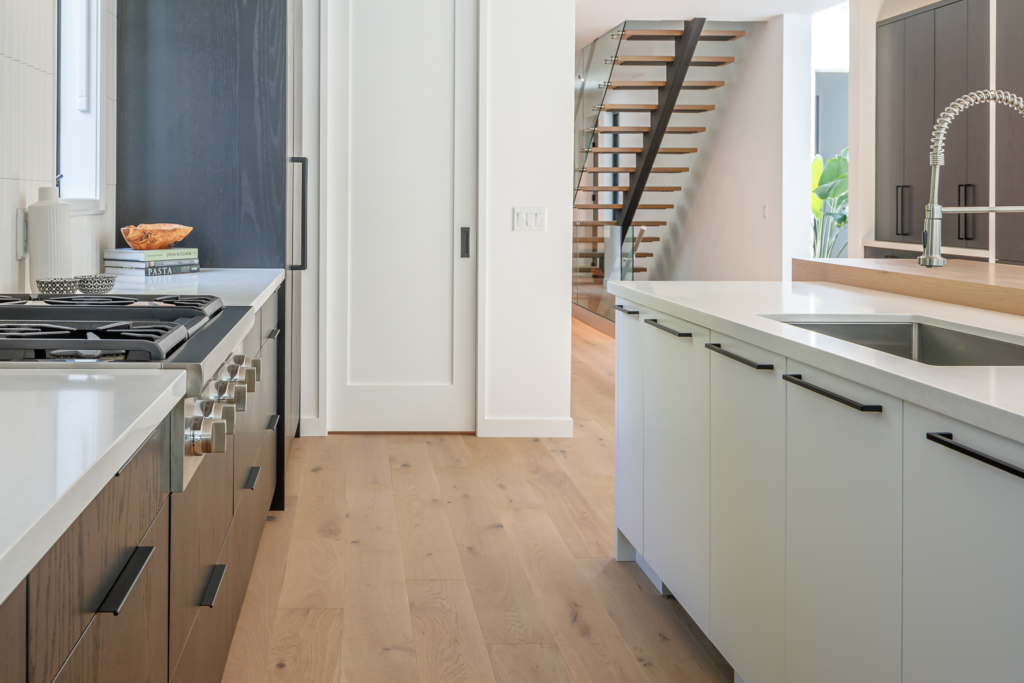
Black matte hardware in two different styles add linear cohesion to this contemporary space.

This rustic statement island has many small drawer pulls to fit the clients storage needs.



